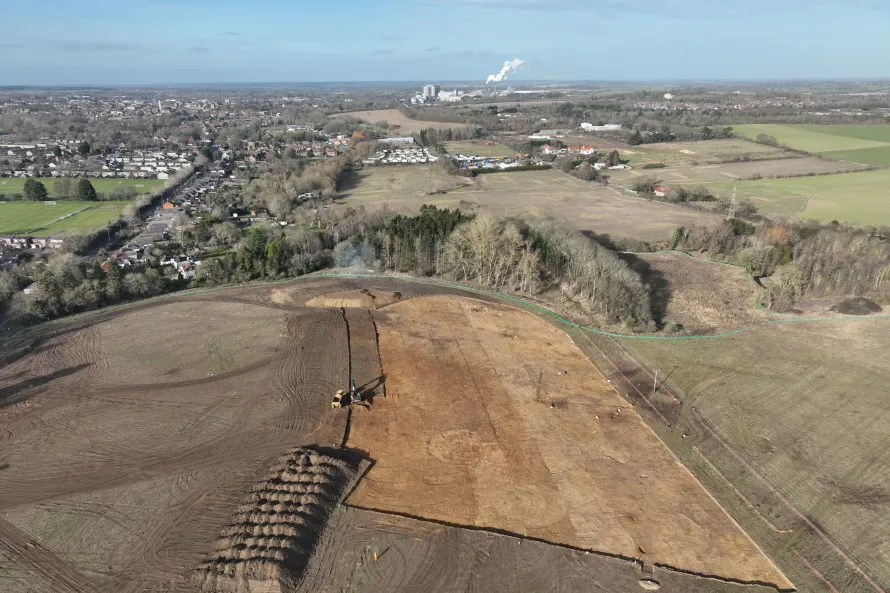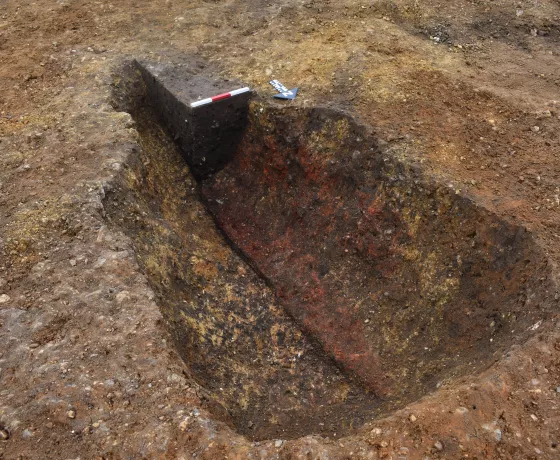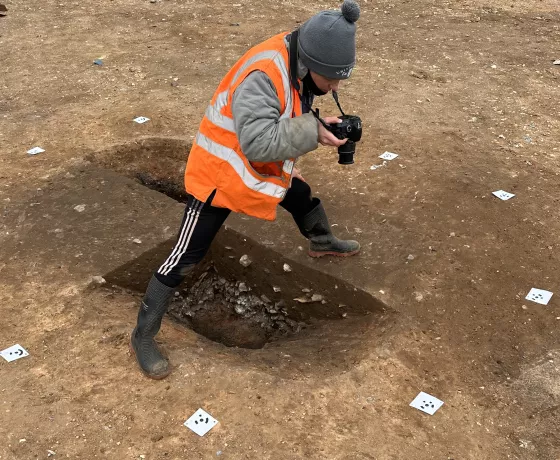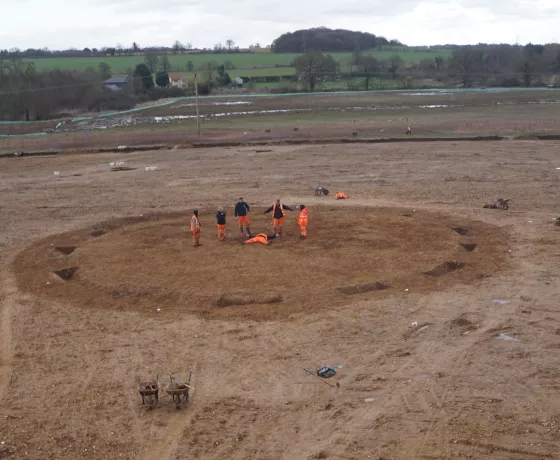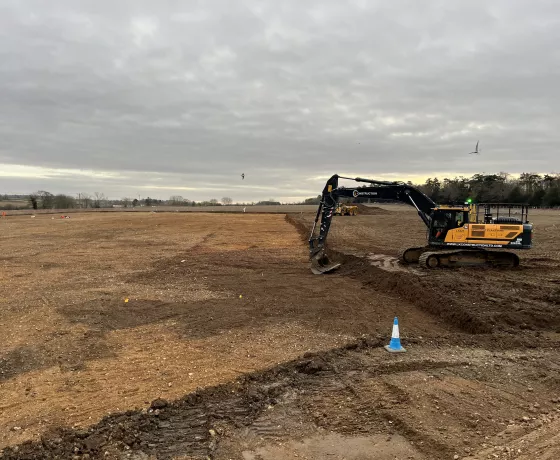The team, led by Project Officer Neal and Supervisor Emily, arrived on site in the middle of January to start removing overburden across the first of the excavation areas to see what archaeological features we can find. We’ve started in Area 2 at the northern end of the site, where we’re expecting to find predominantly Early Anglo-Saxon (AD410-650) remains.
More often than not, the first day of a site can be a little on the dull side, whilst you wait for the plant to arrive and start stripping topsoil. But by lunch time we had promising signs of things to come, with our first Sunken Feature Building turning up! A Sunken Feature Building, or SFB for short, is the term used to describe a small, rectangular wooden structure, which had a sunken or suspended floor. They’re generally believed to be used as workshops for industries such a weaving. We are always happy when we find an SFB because they usually contain lots of good finds!
The Sunken Feature Building, cleaned and with scales ready for photographing.
Thus far, we’ve uncovered about 12 of these structures across Area 2, so the team are having a lovely time hand excavating the backfilled soil from these features. The main thing we’re finding is animal bone…and lots of it. Animal bone is really interesting to collect on a site because it can tell us a lot about a society – for example, if we find cattle bone then we can infer that they were being used to pull ploughs, reared for meat and their skins used for leather. And if we find deer bones, then that would suggest that people are hunting. So a wide range of animal bone would give an indication that a society are engaging in a variety of pursuits.
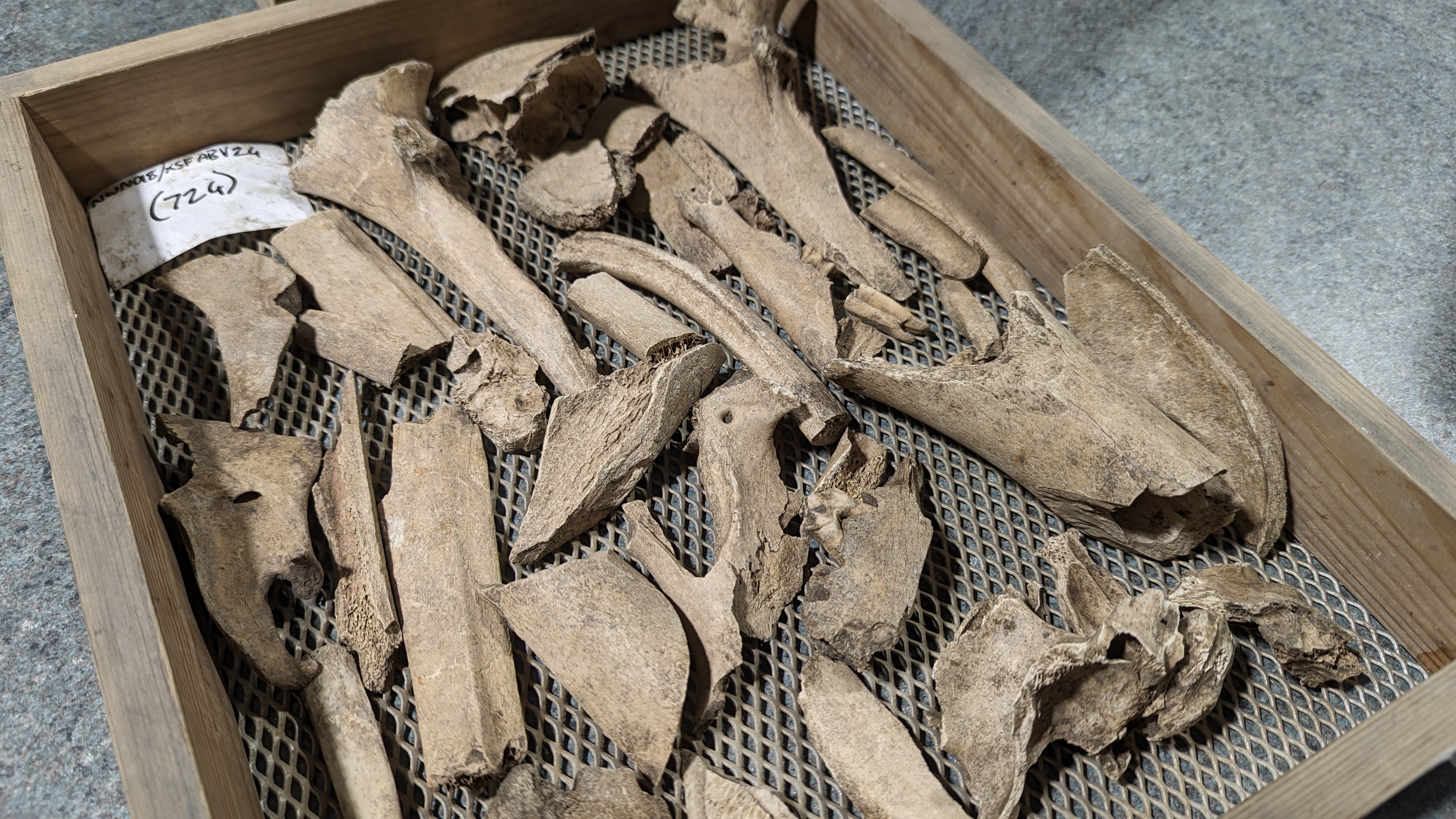
Animal bone back at the office after it has been washed. These wooden trays are specially designed to help our finds dry quickly.
It hasn’t all been about the Saxons thus far on site. We’ve found one pit with fire crack flint and sherds of Middle Neolithic (3500-3000BC) pottery in it, which is an exciting discovery. The pottery we’ve recovered is a type known as Peterborough Ware (named after the place it was first discovered) and is recognisable for its detailed decoration.
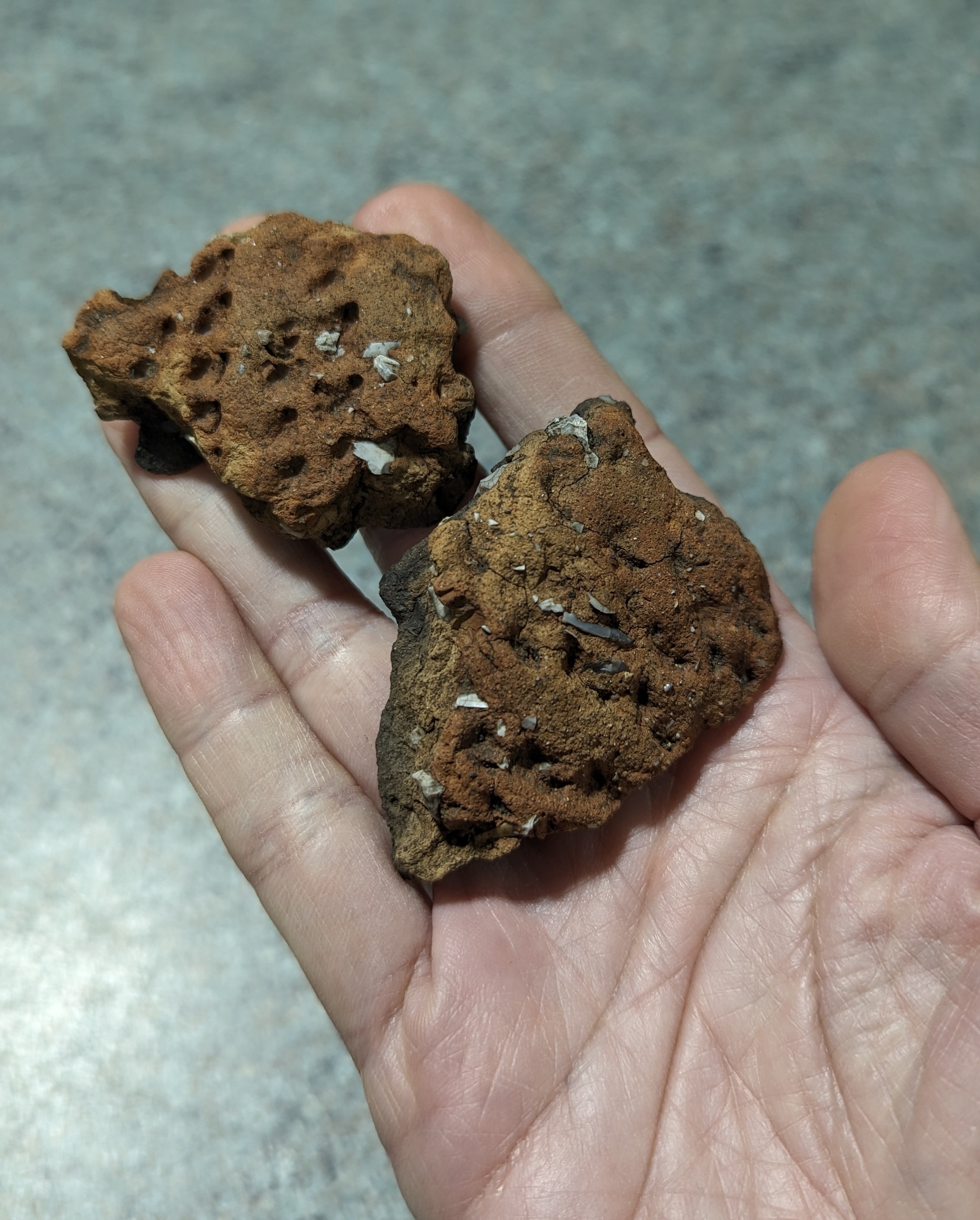
Two sherds of Neolithic Peterborough Ware. The decorative marks were made by pushing wood or bone implements into the clay before firing.
Other posts in this collection
Read our latest posts about the investigations at Abbot's Vale.

